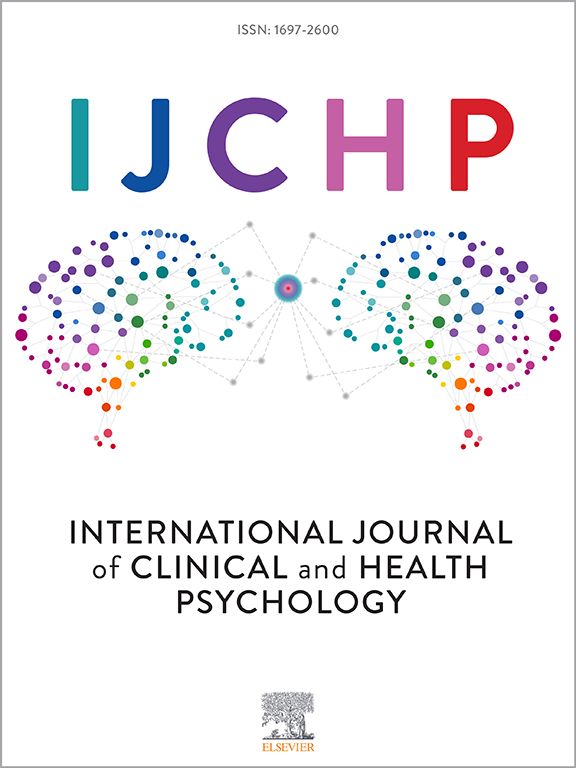Slow-paced breathing enhancing emotional control accompanied with the change of the ∼0.1 Hz heartbeat evoked EEG
IF 4.4
1区 心理学
Q1 PSYCHOLOGY, CLINICAL
International Journal of Clinical and Health Psychology
Pub Date : 2025-04-01
DOI:10.1016/j.ijchp.2025.100571
引用次数: 0
Abstract
Cardiac interoception exhibits tight coupling with brain activity, deeply engaging in emotional behavior. However, the neural mechanisms underlying how heart activity influences brain emotional processing remain poorly understood. This study introduced the heartbeat oscillatory potential (HOP), a novel EEG-based index time-locked to ∼0.1 Hz heartbeat oscillations, and examined the change of HOP during 0.1 Hz slow-paced breathing (SPB). Resting-state data from 108 healthy adults revealed that HOP was involved in the frontal and parietal cortices. Data collected from 37 subjects showed that SPB increased HOP in a spatial- and phase-dependent manner, with increased HOP in the right prefrontal cortex around the peak of the ∼0.1 Hz heartbeat oscillations, mediated the association between the heartbeat oscillations and enhanced emotional control. These findings underscore the pivotal role of the right prefrontal cortex in linking cardiac interoception, providing insights into the benefits of SPB on emotional control from a heart-brain interaction perspective.
慢节奏呼吸增强情绪控制,同时伴有~ 0.1 Hz心跳诱发脑电图的变化
心脏内感受与大脑活动紧密耦合,深入参与情绪行为。然而,心脏活动如何影响大脑情绪处理的神经机制仍然知之甚少。这项研究引入了心跳振荡电位(HOP),这是一种新的基于脑电图的指数,时间锁定在0.1 Hz的心跳振荡,并研究了0.1 Hz慢节奏呼吸(SPB)期间HOP的变化。来自108名健康成人的静息状态数据显示HOP涉及额叶和顶叶皮层。37名受试者的数据显示,SPB以空间和相位依赖的方式增加了HOP,在心跳振荡约0.1 Hz的峰值附近,右侧前额叶皮层的HOP增加,介导了心跳振荡与情绪控制增强之间的关联。这些发现强调了右前额叶皮层在连接心脏内感受中的关键作用,从心脑相互作用的角度为SPB对情绪控制的益处提供了见解。
本文章由计算机程序翻译,如有差异,请以英文原文为准。
求助全文
约1分钟内获得全文
求助全文
来源期刊

International Journal of Clinical and Health Psychology
PSYCHOLOGY, CLINICAL-
CiteScore
10.70
自引率
5.70%
发文量
38
审稿时长
33 days
期刊介绍:
The International Journal of Clinical and Health Psychology is dedicated to publishing manuscripts with a strong emphasis on both basic and applied research, encompassing experimental, clinical, and theoretical contributions that advance the fields of Clinical and Health Psychology. With a focus on four core domains—clinical psychology and psychotherapy, psychopathology, health psychology, and clinical neurosciences—the IJCHP seeks to provide a comprehensive platform for scholarly discourse and innovation. The journal accepts Original Articles (empirical studies) and Review Articles. Manuscripts submitted to IJCHP should be original and not previously published or under consideration elsewhere. All signing authors must unanimously agree on the submitted version of the manuscript. By submitting their work, authors agree to transfer their copyrights to the Journal for the duration of the editorial process.
 求助内容:
求助内容: 应助结果提醒方式:
应助结果提醒方式:


